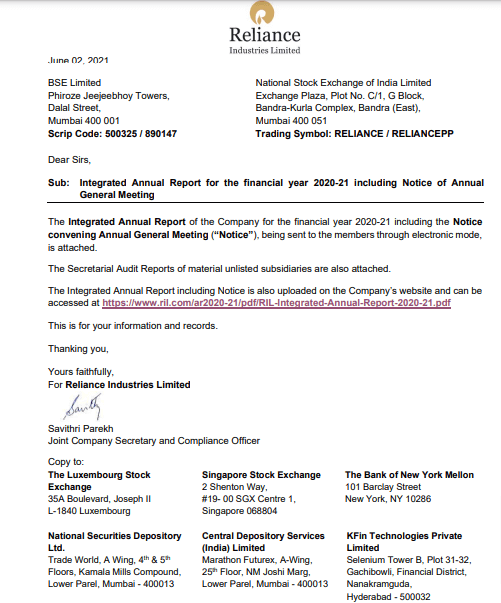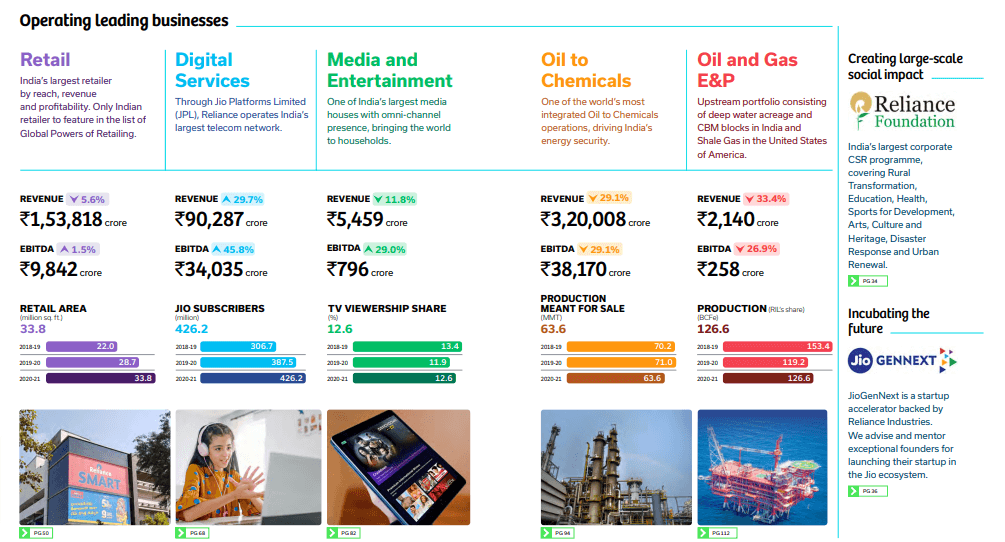This is a detailed guide to what is a business report, explained with examples, types, importance, and features, and how to write it with elements and a checklist.
Definition of business report
“A business report is an orderly, objective communication of factual information that serves some business purpose”. By Raymond Vincent Lesikar, and John D. Pettit
What is a Business Report?
A business report is a formal document that provides an analysis of a specific business issue or situation. It typically includes detailed information on the topic at hand such as data, research, and other relevant sources.
Business reports are used to make business decisions, identify problems or opportunities, or track progress toward goals. They are often written for an internal audience, such as managers or executives, but may also be shared with external stakeholders, such as investors or clients.
Business reports should be well-structured, concise, and objective, presenting findings and recommendations in a clear and easily understandable format. They may include charts, graphs, and other visual aids to help illustrate key points.
Difference between Market Report and Business Report
A business report typically focuses on a specific company’s performance, operations, and financial results. It can provide information on topics such as sales trends, revenue growth, expenses, and profitability.
In contrast, a market report focuses on the broader market landscape and provides information on the trends, opportunities, and challenges in a specific industry. Market reports can include information on market size, growth potential, competition, and consumer behavior.
While both reports aim to provide useful information for decision-making, their focus and scope are different, with business reports focusing on internal operations, and market reports focusing on external market factors.
Difference between a Business Report and a Business Plan
A business report is a document that provides detailed information on a specific aspect of a company’s operations, such as financial results, sales trends, customer feedback, or employee performance. It is used for decision-making, tracking progress, and communicating with stakeholders.
On the other hand, a business plan is a comprehensive document that outlines a company’s goals, strategies, and tactics for achieving success. It typically includes an analysis of the market, a description of the company’s products or services, an overview of the management team, and a financial plan that details how the company will generate revenue and manage expenses over time.
How to Write a Business Report
Writing a business report can be a valuable tool for analyzing and presenting information related to a company’s performance or a specific business project. Here are some steps to follow when writing a business report:
1) Determining the purpose: Before writing the report, it’s important to define the purpose of the report. The writer must know what type of report they are writing and why it is being written. This helps in better research and writing.
2) Check target audience: After determining the purpose of the report, the writer must keep in mind who the report will be addressed. This can help in effectively conveying the message to the concerned persons.
3) Gather information: The writer must then gather data and conduct research. It is necessary to use credible sources such as industry reports, financial statements, or market research studies to collect relevant data.
4) Analysis of the supportive information: This is the main body of the report where the writer will present their findings. They must make sure to use data and statistics to support conclusions. This section can include charts, graphs, and tables to make the information easy to understand.
5) Findings and recommendations: Once the writer has presented their findings, they can draw conclusions and make recommendations based on the analysis. This is where they can suggest ways to improve the company’s performance or make recommendations for future business projects.
6) Determining report format: Before writing the report, the writer must determine what kind of business report it is. This is done so they can structure the report in a logical and easy-to-follow way. They can create outlines that include headings, subheadings, and sections to organize the information in a clear and concise manner.
Elements of a Business Report
A business report consists of three main elements – Front Matter, Body of the Report, and Back Matter.
The format of a business report is as follows:
(A)Front Matter: The front matter of a business report is the first section of the report and provides essential information about the report’s contents and purpose. It includes the following elements:
- Cover Page: This is the first page of the report, typically including the title, author or authors, date, and company logo.
- Title Page: It follows the cover page and provides more detailed information about the report.
- Table of Contents: It is also included in the front matter and provides an outline of the report’s contents, including headings and subheadings with page numbers.
- Executive Summary: It provides a brief overview of the report’s main findings, conclusions, and recommendations.
A portion of the executive summary in the business report:
An executive summary is a brief overview of a business report that highlights the main points and conclusions of the report. It is usually the first section of the report that the reader sees and is often used as a standalone document for busy executives who need to quickly understand the report’s key findings.
The purpose of an executive summary is to provide a concise and clear picture of the main purpose of the report, the methods used to gather data, the key findings and conclusions, and the recommendations based on those conclusions.
(B) Body of the Report: The body of a business report is the main section of the report where the writer presents the data, analysis, and interpretation of the findings in a clear and concise manner. It contains the following elements:
- Introduction: The introduction gives a background on the problem or issue being addressed in the report, the objectives of the report, and an explanation of the report’s scope.
- Methodology: It is a description of the research methods used to gather data and information for the report.
- Results: This section highlights the presentation of the findings or data gathered during the research phase, including tables, graphs, and other visual aids to support the information.
The importance of tables and graphs in a business report:
Tables and graphs are important elements in a business report because they can help to communicate complex data and information in a visual and easy-to-understand way. They are useful for presenting large amounts of data in a clear and concise manner, making it easier for the reader to interpret and understand the information presented.
- Discussion: An analysis and interpretation of the results, including the significance of the findings and their implications.
- Conclusion: The conclusion contains a summary of the main points made in the report, including the conclusions drawn from the analysis and any recommendations for action.
- Recommendations: Finally, the recommendation section contains specific actions or strategies that are proposed to address the problem or issue being investigated in the report.
(C) Back Matter: The back matter of a business report is the section that comes after the main body of the report and includes any additional information that may be useful for the reader. This section may include
- Appendices: This contains additional materials such as charts, graphs, or data that support the report but are not included in the main body of the document.
- References: This contains all the citations and references used in the research and collection of data for the report.
- Glossary: A glossary lists the technical terms used in the report with their meanings and descriptions.
Must Read: What are the parts of a business report
How should headings be used in business reports?
Headings are an essential tool for organizing a business report and making it easy to read and navigate. Headings should be clear and descriptive, giving the reader a sense of what each section will cover.
They should also be formatted in a way that makes them stand out from the rest of the text, such as by using bold or larger font sizes. They should be used consistently throughout the report to guide the reader through the various sections and sub-sections.
When using headings in a business report, it is important to follow a logical and hierarchical structure. The main heading of the report should clearly state the purpose of the report and provide an overview of the main points that will be covered. Subheadings should be used to break down the report into smaller sections, each covering a specific topic related to the overall theme of the report.
Examples of business reports
Below we have listed business reports of some top companies along with the business performance metrics.



Topics for writing Business Reports
- Importance of the communication process?
- Non-verbal aspect of business communication?
- Modes of the communication process?
- Changing patterns of business correspondence?
- Types of barriers in business communication?
- How to overcome barriers of communication in an organization?
Most common types of Business Reports
In business communication, there are many different types of business reports, with each type designed to provide specific information about a particular aspect of a company’s operations. Some common types of business reports include:
1) Informational Report: This type of business report provides factual information on a particular topic or issue, without making any recommendations or drawing conclusions.
Further Reading: How to Write an informational report
2) Analytical Report: These reports use data and analysis to draw conclusions and make recommendations. It typically includes an executive summary, introduction, methods and results sections, and a conclusion with recommendations.
3) Routine Report: These reports are produced on a regular basis, such as weekly or monthly. It typically provides updates on specific activities or tasks, such as progress on a project or sales figures for a given period.
4) Informal Business Report: An informal business report is less structured and formal than other types of business reports. It may be used for internal communication between colleagues or departments and can include memos, emails, or short notes.
5) Short Report: This type of business report is concise and to the point, typically no more than five pages in length. It is often used to communicate a specific issue or recommendation quickly and may include only the most essential information.
Must Read: List of different types of business reports with classification
Importance of Business Reports
Business reports are an important tool for organizations to communicate and document important information related to the business. Some of the key reasons why business reports are important to include:
- Evaluation: Business reports can be used to evaluate the effectiveness of specific initiatives or programs by tracking progress toward goals and measuring outcomes.
- Communicating with stakeholders: Business reports can be used to communicate important information to a range of stakeholders, including investors, customers, suppliers, and employees.
- Supports decision-making: Business reports can provide the information and analysis needed to make informed decisions about business operations, investments, and strategies.
- Providing a record of performance: Business reports can provide a historical record of the organization’s performance, documenting trends and changes over time.
Must Read: What is the importance of a business report
Characteristics of Business Reports
A good business report should have the following characteristics:
1) Purpose: Business reports are written with a specific purpose in mind, such as informing a decision, presenting research findings, or providing updates on a project or initiative.
2) Audience: Reports are tailored to the needs and interests of the intended audience, which may include executives, managers, stakeholders, or external clients.
3) Structure: The report must have a clear and standardized structure, which typically includes an introduction, background information, results, analysis, recommendations, and conclusions.
4) Objectivity: Reports are expected to be objective and unbiased, and to present information and analysis in an accurate and factual manner.
Must Read: What are the characteristics of a good business report
Advantages and Disadvantages of Business Reports:
In this section, we will look at a few advantages and disadvantages of business reports.
Advantages:
- Business reports provide clear and concise information about various aspects of a business, such as financial performance, market trends, customer satisfaction, and employee productivity.
- Business reports can be used to share information among employees, departments, and stakeholders. This facilitates communication and collaboration, allowing everyone to stay informed and work together towards common goals.
Disadvantages:
- Business reports can be time-consuming to create, especially if they require extensive research and analysis. This can be a burden on employees who are already busy with their regular responsibilities.
- Depending on the length and complexity of the report, it can be overwhelming for readers to process and understand all of the information contained within it. This can be especially true if the report is full of technical jargon or financial data that may not be familiar to all readers.
What is a Small Business Report
A short business report is a concise document that provides a brief summary of key information related to a specific business topic. Short reports are typically between one and five pages in length and are often used to communicate information to a specific audience.
Short business reports typically include an introduction that highlights the context of the report, a summary of the key points or findings, and a conclusion or recommendation. They may also include supporting data, such as charts, graphs, or tables, to help illustrate key points.
Must Read: What is a small report and how to write a small report with examples
What is the Significance of Business Report Writing in Business Success?
Business report writing is a critical tool for achieving success in business. Reports provide valuable information to business owners and managers that can be used to make informed decisions, identify improvement areas, and create growth strategies.
They also facilitate communication within the organization, allowing employees and stakeholders to stay informed about the business’s progress and work together towards common goals. Business reports can be used to help plan for the future and set goals, and promote accountability by tracking and reporting on performance metrics.
Checklist for making your Business Report Reader-Friendly
Here is a checklist for making your business report reader-friendly:
- Use clear and concise language: Avoid using technical jargon and complex language that may be difficult for readers to understand. Use simple, clear language that is easy to read and comprehend.
- Organize your report effectively: Use headings, subheadings, and bullet points to break up your report into smaller, more digestible sections. This makes it easier for readers to navigate and find the information they are looking for.
- Use visual aids: Incorporate graphs, charts, and tables to help illustrate key points and make the information more engaging. This can help readers understand complex data more easily.
- Proofread your report: Ensure that your report is free of grammatical errors, typos, and other mistakes. This can help make your report appear more professional and increase the credibility of the information contained within it.
Frequently Asked Questions
Q1) What is the purpose of a business report?
Ans: The purpose of a business report is to communicate relevant information about a company’s performance, activities, or other important data to various stakeholders, including executives, shareholders, employees, customers, or external partners. They also help in decision-making, evaluation, and keeping a record of business activities.
Q2) What are the important principles of a business report?
Ans: The important principles of the business report are the principle of objectivity, the principle of knowing your target audience, the principle of planning & framework, the principle of clarity, the principle of organizing your report, and the principle of evaluating information.
Q3) What are the 5 main parts of a business report?
Ans: The 5 main parts of a business report include a title page, executive summary, table of contents, findings, and discussion, and finally, the conclusion and recommendations.



